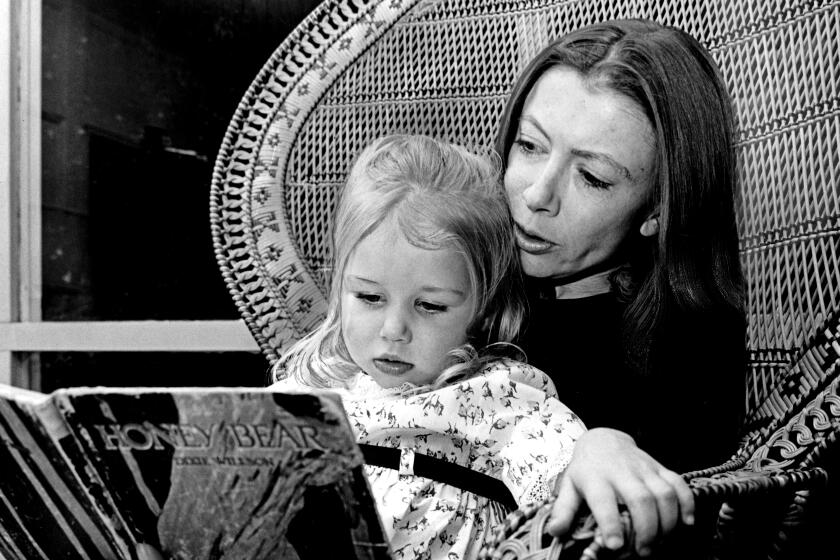For Adults, ‘Today’s Youth’ Are Always the Worst
- Share via
IRVINE — Tom Brokaw’s recent bestseller “The Greatest Generation” lauds the youth of the 1930s, who toiled through the Great Depression, won World War II, then supplied three decades of statesmen, can-do spirit and family stability, as “the greatest generation any society has ever produced.” Conventional wisdom holds that the nation’s “goodness” has grievously eroded with that generation’s passing because 1990s youth are the “worst generation”: apathetic, asocial, even coldly murderous. As one remedy, California Gov. Gray Davis proposes mandatory community service for college students to get back to “the ethics of the World War II generation” and its “sense of obligation to the future.”
The ironies challenging this conventional wisdom are startling. For example, surveys such as one from the National Assn. of Secretaries of State reveal that volunteerism by today’s allegedly alienated kids, especially for human services “such as soup kitchens, hospitals and schools,” has risen sharply to “record high levels,” reflecting contemporary teenagers’ desire to “help others in a personal way.”
Another irony: Just as today’s young people are stereotyped as frighteningly dissolute, so were the youth of the 1930s bitterly criticized by their elders. They were called not the “greatest generation,” but a new type of “lost generation.” To look at 1930s press reports, scholarly assessments and official declarations, never had young people been so violent, mentally disturbed, drugged, lazy, promiscuous, criminal and hopeless. Even when compared with the usual “wayward-youth” apprehensions voiced by grown-ups dating back to ancient Greece, the attack on Depression-era kids was vicious.
“[A] generation, numbering in the millions, has gone so far in decay that it acts without thought of social responsibility,” historians George Leighton and Richard Hellman proclaimed in a much-quoted Harper’s Monthly article in 1936. “High-school kids are armed, out for what they can get . . . . The Lost Generation is even now rotting before our eyes.”
Columbia University President Nicholas Butler summed up the grave “youth problem” of 1935: “Day by day the newspapers report one grave crime after another, one moral delinquency after another, and one dereliction of duty after another.” A prominent journalist, Maxine Johnson, traveled 10,000 miles studying this new “Lost Generation,” the title of her 1936 book. Everywhere she found teenagers “confused, disillusioned, disenchanted,” in a state “rapidly approaching a psychosis.”
Yet, six decades later, Brokaw renders a well-accepted verdict that this same generation’s “sacrifices” and “sense of duty” literally “saved the world” and built modern America. But where Brokaw and Davis laud the ethics and reliability of Depression-era youth, the media of the 1930s denounced them as a scourge of drugs, welfare and degenerate values.
“Youth gone loco: Villain is marijuana,” was a headline in a major magazine in 1938. “Organized gangs are distributing drugs to every school in this city,” a 1937 government documentary warned. “Dope peddlers infest our high schools . . . in every community and hamlet in our country. Hundreds of new drug cases involving our youth come in every day.” Sensational press reports of brutal, youthful killers alarmed a nation: “Drug-crazed teens have murdered entire families!”
Journalist Isaac F. Marcosson wrote a now-classic article for the mass-circulation American Magazine in 1936, in response to what editors called “literally thousands” of readers bemoaning the “youth problem.” The article lamented that 75% of the 100,000 young men tested by the American Youth Commission “were suffering from some health defect induced by mental anxiety.” The FBI reported in 1936 that “the average age of criminals was 19.”
Government estimates of abortions and venereal disease in the 1930s were the highest of any generation before or since, one result, American Mercury magazine reported in 1936, of “the drinking bouts in which high-school and college students frequently indulge, resulting in promiscuous relations.” Studies by noted social scientists in the 1941 text “Personality and the Family” found 80% of young men and 60% of young women of the 1930s reported having premarital sex. Stability was being eroded: Marriages contracted in 1935 were four times more likely to end in divorce than those of the 1880s.
The extreme contrast between the despair with which Depression-era youth were regarded by their elders versus the reverence accorded them by posterity raises a red flag: Is it possible that conventional wisdom about the rottenness of young people today is also misguided?
More pointedly, does denigrating youth serve to whitewash the failures of the adult generation and its institutions? Monumental fiscal irresponsibility from Main Street to Wall Street brought on the Great Depression. Among adults, skyrocketing crime, suicide, drunkenness and a murder rate higher than today’s devastated families and communities in the 1930s. Similar trends are evident now. Statistics show soaring rates of violent and property crime, drug abuse and family instability among adults over the past quarter-century, along with unchecked concentration of wealth in the richest fraction of the population.
But there is a surprise: Contrary to their bad press, today’s young Californians are behaving spectacularly well. Over the last two decades, teenage rates of felony and misdemeanor arrest are down 40%, suicide and self-destructive deaths have dropped 60% and drug-abuse deaths have declined 90%. In 1997, no teenagers in Los Angeles County died from heroin, cocaine, crack or methamphetamine (drugs that killed 250 adults), one of many positive facts about today’s young that are not discussed, perhaps because they violate the rigid narrative that “kids today” are going to hell.
Youth today seem doggedly determined to survive disinvestment by the elder generation. Even after 25 years of massive public-school underfunding and classroom crowding, students display higher school enrollments, test scores, college preparatory work and volunteerism than their forebears. Only California’s poorest youth, confronted by the poverty and joblessness of a selective economic depression whose attrition is every bit as devastating to the young as the Great Depression was, have shown increases in violence and alienation. Yet, these are far less than the dismal conditions imposed on them would predict.
For all their grumbling, adults of the 1930s, led by President Franklin D. Roosevelt, created massive new job and education programs for the young, despite a strapped Depression-era budget. When New Deal programs, the GI Bill and Social Security are added up, Brokaw’s “greatest generation” turns out to have been the most government-subsidized cohort in history. Young people quickly justified the investment in sweat-labor Civilian Conservation Corps camps and World War II trenches.
But while Roosevelt called on youth of the 1930s to help his administration fight “the forces of organized greed” that spawned a “a society that hurts so many of them,” President Bill Clinton and the Republican Congress have abetted the amassing of corporate wealth, excused their own abject moral failings and loudly demanded a “personal responsibility” ethic of young people that those in power are unwilling to meet.
Just possibly, the better behavior, personal optimism and volunteer spirit of today’s youth portend a greatness so far obscured by their elders’ torrent of negativism. *
More to Read
Sign up for our Book Club newsletter
Get the latest news, events and more from the Los Angeles Times Book Club, and help us get L.A. reading and talking.
You may occasionally receive promotional content from the Los Angeles Times.










